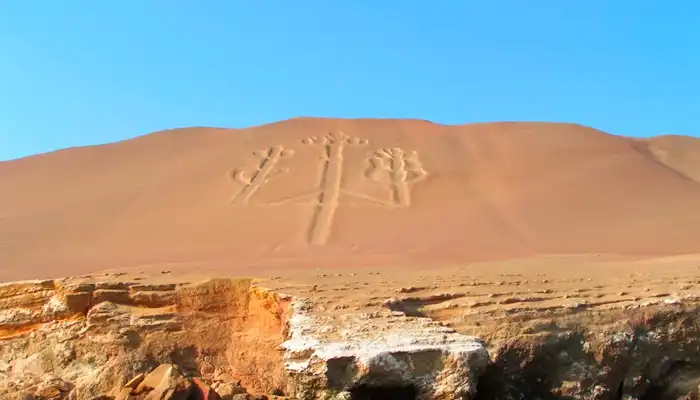
Peru, a land steeped in ancient history, is a country of realities and enigmas, of truths and mysteries, of certainties and doubts. This duality makes it a fascinating destination where every place holds a story, a myth, a legend, elevating your travel experience beyond simply visiting an attraction.
As you journey through this diverse and sometimes contradictory land, you might find that the stone city atop a mountain was indeed a fortress, and that path known as the Inca Trail could have been a route created by the Wari (Huari), an Andean culture that predated the Inca civilization.
In your travels, you will arrive at Paracas, a coastal district in the province of Pisco (Ica region), where, from the sea, you’ll catch sight of an immense geoglyph known as the Candelabra, but also as the Trident and Three Crosses. For, as you know and have learned, in Peru, there’s often more than one explanation.
The Candelabra, Trident, and Three Crosses: to this day, their age remains a mystery—are they pre-Hispanic or from the colonial era? Their origin—were they created by the Paracas, the Nazca, or the soldiers of liberator San Martín? Their meaning—do they represent a religious symbol, a Masonic emblem, or a warning signal for sailors?
What is undeniable is that it stands there, etched into the sands of the coastal desert, challenging those who seek a definitive truth. This quest continues, for the geoglyph, measuring 170 metres with lines that are 1.20 metres deep, keeps generating all kinds of theories and speculations.
Contents
Sailing towards the geoglyph
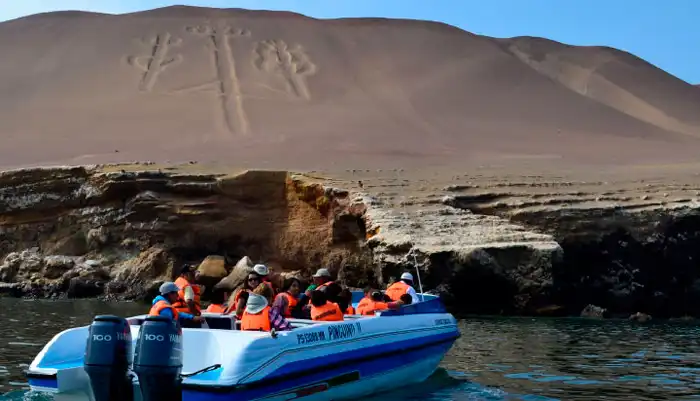
Not everything in this destination is confusion, debate, and doubt. There are also certainties and undeniable truths. No one can deny that the Candelabra—located in the northern area of the Paracas Peninsula—impresses with its grandeur, the scenic beauty of its surroundings, and the quality of its lines, which are clearly visible from the sea.
The Pacific Ocean serves as the perfect vantage point. So, get ready to sail in a speedboat. Your departure point will be the artisanal pier at Chaco de Paracas, located 19 kilometres south of the city of Pisco and 259 kilometres from Lima, the capital of Peru.
Tourist boats head towards the Ballestas Islands, a collection of small islands that are home to a diverse range of oceanic wildlife. From sea lions (both smooth and rough) and dolphins to Humboldt penguins, as well as various seabirds and guano birds like the zarcillos, guanayes, boobies, and pelicans.
It’s a genuine festival of biodiversity that you’ll observe from the speedboat, along with the Candelabra. This enigmatic attraction is your first stop on the marine journey (approximately 2 hours), which is often complemented by a land tour of the Paracas National Reserve, where the desert flirts with the sea.
But you’ll explore that another time. For now, set aside thoughts of aquatic mammals and guano birds. Focus on the geoglyph in front of you, sparking a series of thoughts and questions as your guide shares various theories and interpretations about what you’re seeing.
A Candelabra, so many stories
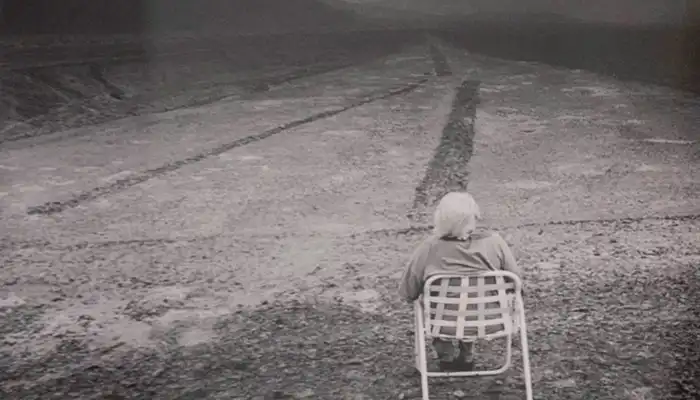
In the Ica region, pre-Inca cultures flourished, leaving a legacy that endures to this day. The Paracas (700 BC—200 AD) are renowned for their cranial trepanations and the quality of their textiles, while the Nasca or Nazca (10 BC—600 AD) are world-famous for the geoglyphs they etched into the plains.
Were they the ones who traced the Candelabra on the slope of a coastal hill? Is the Paracas geoglyph related to those of Nazca? Mathematician María Reiche suggested that both structures might have had some religious or astronomical significance.
Known as the “Lady of the Pampas,” Reiche, who was born in Germany but had a Peruvian heart, determined that the famous image was created by removing the top layer of the hillside. During her research, she collected fragments of Paracas pottery, suggesting a connection between that culture and the geoglyph.
The collected material underwent carbon-14 testing, which concluded that the pottery was made over 2,000 years ago. While the study does not clarify the age of the geoglyph, it offers clues about the origin of this mysterious figure.
Reiche found that due to its location and dimensions, navigators could identify the Candelabra from approximately 12 nautical miles (22.224 km) away. This led to the hypothesis that the Trident, as it is also called, may have served as a sort of lighthouse or navigational guide for sailors.
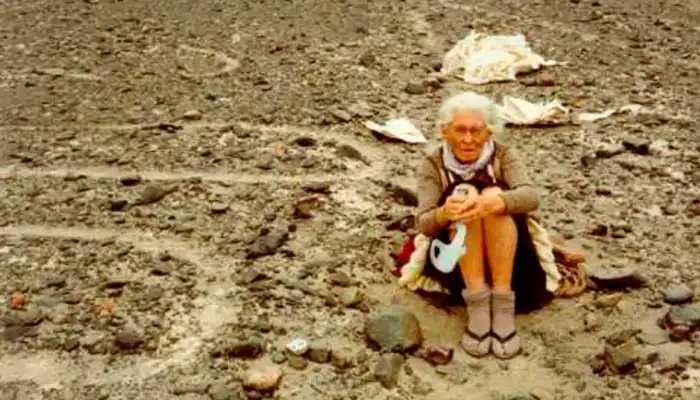
Sailing and more
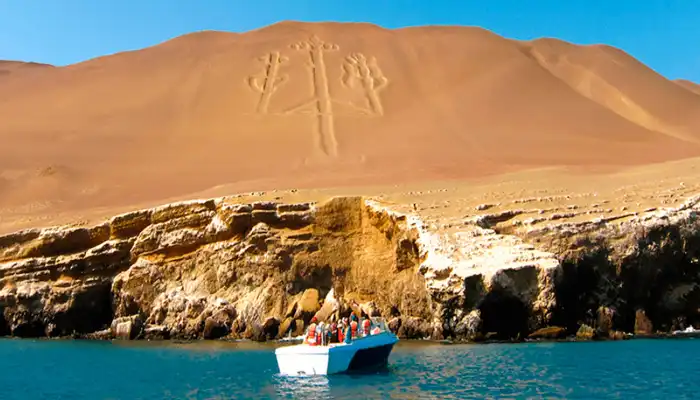
The Candelabra of Paracas is one of the highlights included in the tour to the Ballestas Islands. This circuit is among the most popular in Peru, attracting both local and international travellers who ride the waves to marvel at the intriguing geoglyph, the ocean scenery, and the marine wildlife.
Upon returning to shore after two hours of sailing, treat your taste buds to ceviche, leche de tigre, a seafood jelly, and other delicious seafood delights. You can also refresh yourself in the Pacific, try kitesurfing, and enjoy various water activities. If you’re feeling more adventurous, you’ll have the chance to go paragliding.
Another tempting option is to visit the Paracas National Reserve. Here, you’ll find a viewpoint for seeing parihuanas or flamingos, the Julio C. Tello Site Museum, and several secluded beaches, such as Rayón and La Mina, which will leave you in awe of the stark contrast between the arid land and the vast Pacific.
By sea and by land, Paracas will reveal the unique beauty of the Peruvian coast, distinct from the greenery of other shorelines, yet impressive for its unusual geography, its turbulent winds, its miraculous biodiversity, and the historical certainties and doubts evoked by the Candelabra.
How to get to Paracas?
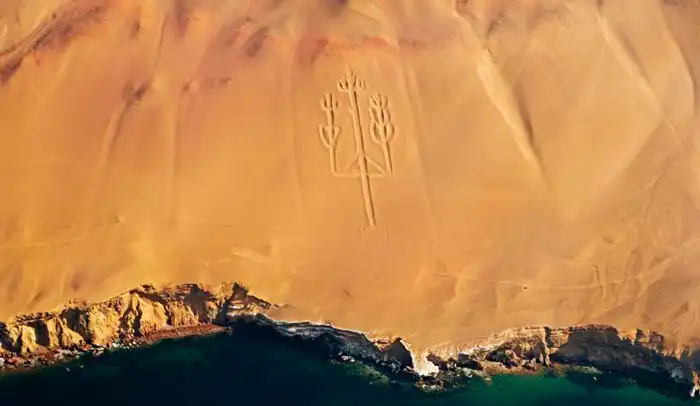
By land, always by land, via the Panamericana Sur. This road is wide, paved, and generally in good condition. At kilometre 245, you’ll find the turnoff to the district of Paracas (approximately 10 km).
The journey from Lima takes about three hours. The bus company Cruz del Sur offers daily departures starting at 4:00 a.m. (cost: 60 soles). Other transport companies don’t go directly to Paracas, so you’ll need to get off at the turnoff and continue your journey by taxi or shared van.
Another alternative is to rent a car or hire the services of a local operator. This option will save you the hassle of navigating the road. Tour companies will offer various itineraries, from full-day trips to more comprehensive options that include additional attractions.
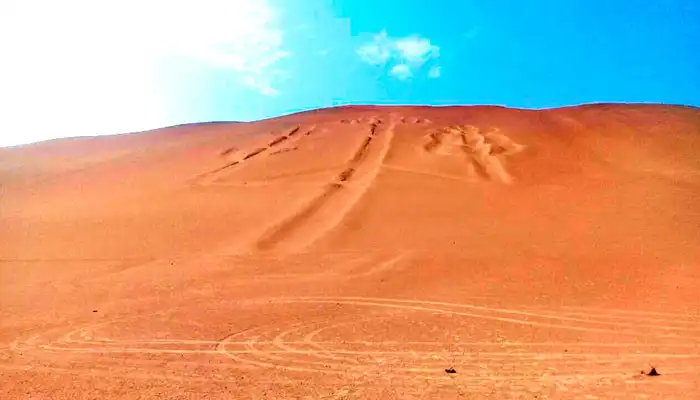
Once you’re in Paracas, or rather at the artisanal pier in Chaco, you’ll need to take the boat tour to the Ballestas Islands. This tour includes a stop to observe the Candelabra from the boat. The journey lasts approximately two hours.
Before you set off, keep in mind that the speedboats only depart in the mornings. The schedule can vary depending on weather conditions and may occasionally be cancelled. The cost of the tour ranges from 40 to 60 soles (depending on the season and the day).
Paracas is also accessible by land from Ica, Arequipa, and Cusco. In these cities, you’ll find interprovincial buses that will drop you off at the turnoff to Paracas or in the city of Pisco.
Travel Tips
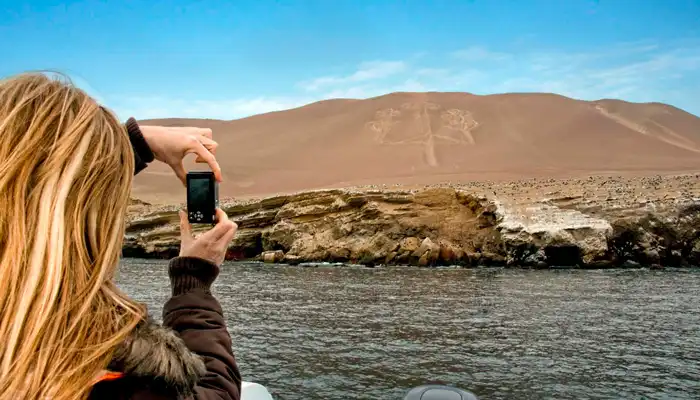
- Check the schedules for the tours to the Ballestas Islands. Keep in mind that when the sea is rough or the wind is very strong, authorities may cancel the departure of tourist boats.
- The Candelabra is located in a sunny, hot area with strong winds known as “paracas.” Be prepared and bring sunscreen, a cap or visor, a bottle of water to stay hydrated, and a windbreaker.
- The best time to visit Paracas is from October to April. These months are warmer, and the sunlight enhances the coastal scenery.
- Wear lightweight clothing and comfortable shoes. Hiking boots aren’t necessary; you won’t be walking much on the Ballestas Islands, and the trails in the national reserve are short.
- It’s a good idea to bring a change of clothes. Remember that you’ll be sailing, and there’s always a chance your clothes could get wet.
- The Candelabra, the Ballestas Islands, and Paracas are archaeological and natural wonders. Take care of them and follow the guidance of your tour guide and the park rangers from the National Service of Protected Natural Areas (Sernanp).
- Check the weather forecast before your visit. Be prepared for potential climate changes, especially in winter (June to September).






